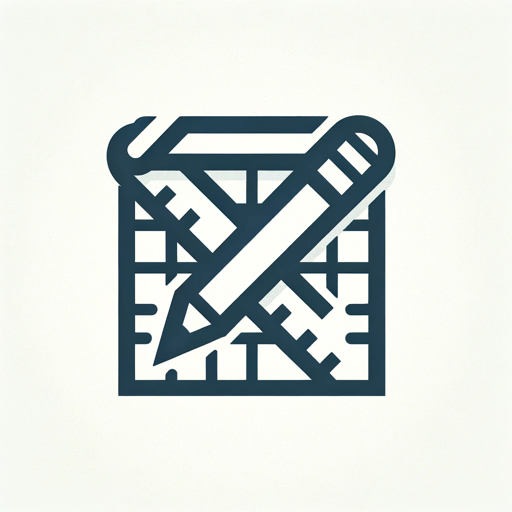SQL Database Architect-AI-powered SQL database design
AI-driven SQL database design assistant.
Expert in SQL DB design with the ability to print ER diagrams
Related Tools

SQL Expert
SQL expert for optimization and queries.

Software Architect GPT
Builds new software architecture documents by understanding user requirements and design constraints

SQL Generator
Advanced SQL assistant and query generator. Write clean SQL queries and become a much faster developer.
Postgres Expert
The GPT does act as an PostgreSQL Dataase Exrpert, It masters the knowledge of Postgres very well.

Database Designer
This GPT can provide guidance on database schema design, SQL queries, data normalization, database optimization, and handling various database management systems (DBMS) like MySQL, PostgreSQL, and MongoDB.
SQL+ 🔴VISUALIZE 🔴
🔴VISUALIZE 🔴DATABASES🔴 Design & Optimize SQL queries. Particularly good at SQL.
20.0 / 5 (200 votes)
Overview of SQL Database Architect
SQL Database Architect is a specialized tool designed to assist developers, data architects, and database administrators in building, optimizing, and managing SQL-based databases. Its primary function is to guide users in structuring databases using relational database design principles, focusing on normalization, data integrity, and efficiency. The tool emphasizes compatibility with various SQL technologies, such as Microsoft SQL Server and popular ORMs like Entity Framework, and ensures that the database design adheres to best practices for the user's specific environment. The design purpose of SQL Database Architect revolves around improving database architecture through formal methods such as Entity-Relationship (ER) modeling. This enables users to visualize complex data models, identify relationships, and refine the design before implementation. For example, a user designing an e-commerce system with products, customers, orders, and payments would need to carefully manage relationships between these entities. SQL Database Architect assists by creating ER diagrams that demonstrate how data should be connected, ensuring referential integrity, and suggesting normalized structures. The tool also automates parts of the design process by generating diagrams and table structures that align with normalization rules (like 1NF, 2NF, 3NF). This saves time, reduces errors, and ensures optimal data organization.

Key Functions of SQL Database Architect
ER Diagram Generation
Example
The tool generates an Entity-Relationship diagram that visually represents the structure of a database, defining tables, fields, and relationships.
Scenario
An enterprise is designing a CRM system and needs to visualize how customers, sales teams, products, and orders are interrelated. SQL Database Architect helps by generating an ER diagram to model this system, identifying the cardinality of relationships (e.g., one-to-many, many-to-many), and ensuring the system’s design adheres to normalization rules.
Database Normalization
Example
Ensuring a database is normalized, such as breaking down data to eliminate redundancy and anomalies.
Scenario
A user is designing an employee management system. SQL Database Architect ensures that tables like 'Employee,' 'Department,' and 'Project' are normalized. For instance, instead of storing department details within the 'Employee' table, a separate 'Department' table is created, and a foreign key is used to maintain relationships between employees and departments, promoting normalization up to 3NF.
Compatibility and ORM Integration
Example
Adapting the database structure to work smoothly with specific SQL technologies, such as Microsoft SQL Server and Entity Framework.
Scenario
A developer working on a .NET application with Entity Framework needs the database to integrate seamlessly with the ORM. SQL Database Architect helps generate SQL code that aligns with Entity Framework conventions (e.g., using proper foreign key constraints and table relationships), ensuring that the database structure supports automatic model binding in code.
Target User Groups for SQL Database Architect
Database Administrators (DBAs)
DBAs are responsible for managing and optimizing large-scale databases. They benefit from SQL Database Architect's ability to design highly normalized and efficient databases, ensuring scalability and data integrity across the organization. The tool assists in identifying potential performance bottlenecks during the design phase, helping DBAs ensure the database remains maintainable as it grows.
Application Developers
Developers building data-driven applications can use SQL Database Architect to create database designs that align with their application logic. This tool helps them map out their databases with visual diagrams, ensures compatibility with ORMs, and provides optimized SQL scripts. Developers benefit from automated diagram generation, normalized structures, and schema recommendations, which speed up the development process while ensuring data consistency.

Guidelines for Using SQL Database Architect
Step 1
Visit aichatonline.org for a free trial without login, also no need for ChatGPT Plus.
Step 2
Determine the specific SQL technology you are working with, such as Microsoft SQL Server or MySQL, and gather all relevant database requirements.
Step 3
Start by inputting or describing your data requirements. Focus on the entities, attributes, and relationships you need in your database.
Step 4
Review the ER diagram generated by the tool, ensuring it aligns with your use case, such as web application development, data warehousing, or reporting.
Step 5
If necessary, iterate on the design by refining your input, and then finalize the database schema for implementation in your chosen SQL environment.
Try other advanced and practical GPTs
Database Designer
AI-powered database design, simplified.

SEO
AI-powered SEO insights for optimal web performance.

SEO
AI-Driven SEO for Enhanced Visibility

中文GPT4.0
AI-powered tool for Chinese language mastery

中文代码助手
AI-driven assistance for code and language

图片生成器
Create images effortlessly with AI

Database Management Systems
AI-powered Database Management.

Ultimate X (Twitter) Content Creator
Empower your tweets with AI-driven content.

Social Media
AI-powered social media made simple

Bible
AI-powered biblical insights for everyone.

Yippy - UEFN Verse FortniteCreative helper
AI-powered Verse code helper for UEFN.

Browsing with Bing
AI-powered real-time search and answers.

- Academic Research
- Web Development
- Reporting
- Database Design
- Data Warehousing
SQL Database Architect Q&A
What is the main purpose of SQL Database Architect?
SQL Database Architect is designed to assist users in creating optimal relational database schemas. It helps translate user requirements into well-structured ER diagrams and database designs, compatible with various SQL technologies.
Can SQL Database Architect handle different types of SQL databases?
Yes, the tool is flexible and can generate schemas for various SQL databases such as Microsoft SQL Server, MySQL, PostgreSQL, and others. It allows users to tailor the design to the specific SQL environment they are working with.
How does SQL Database Architect ensure data normalization?
SQL Database Architect follows best practices in database design, emphasizing higher forms of normalization to reduce redundancy, prevent anomalies, and ensure data integrity without over-complicating the schema.
What are some common use cases for SQL Database Architect?
Common use cases include designing databases for web applications, data warehouses, and reporting systems, as well as for academic research, educational purposes, and any scenario where relational data needs to be stored efficiently.
Is SQL Database Architect suitable for both beginners and advanced users?
Yes, SQL Database Architect is user-friendly and provides detailed guidance, making it suitable for both beginners who need structured assistance and advanced users looking for an efficient way to design complex databases.